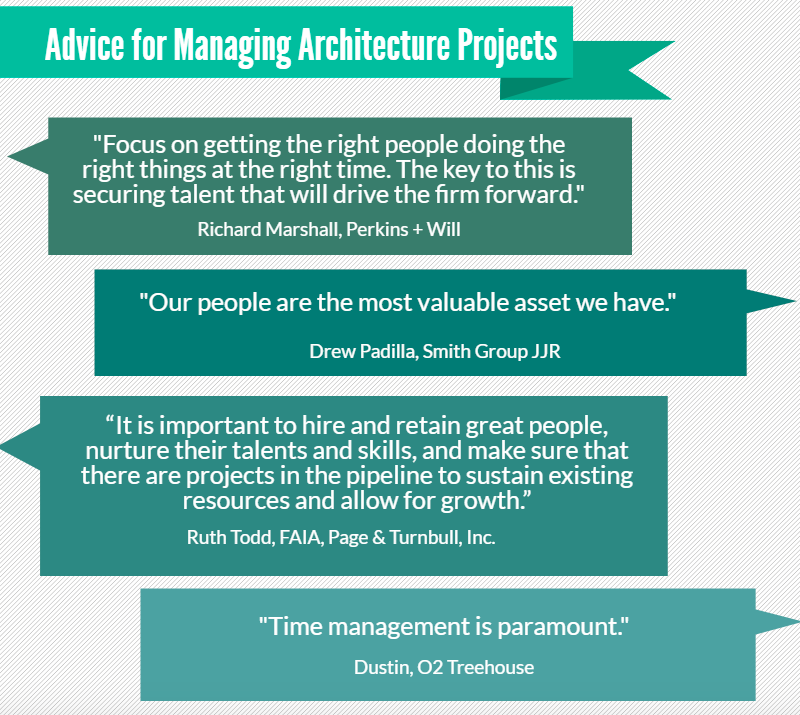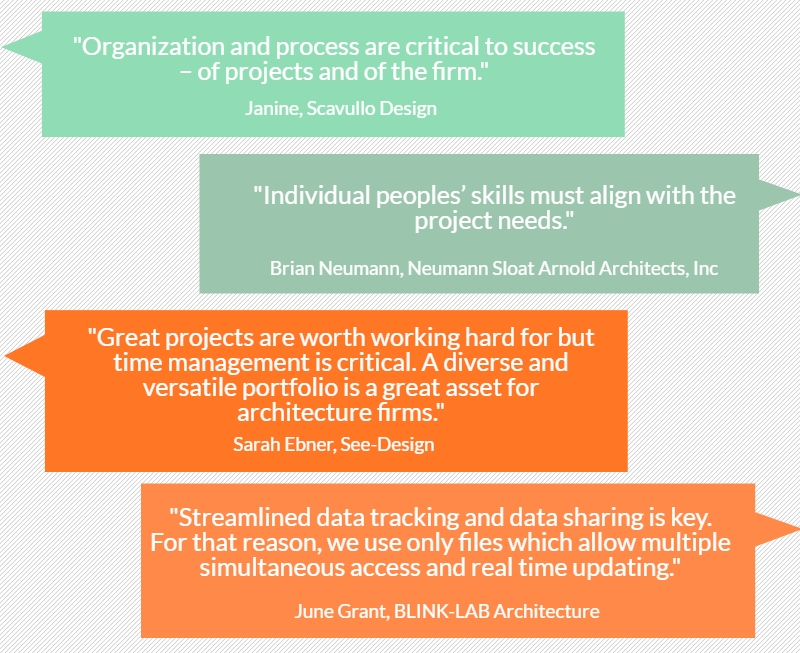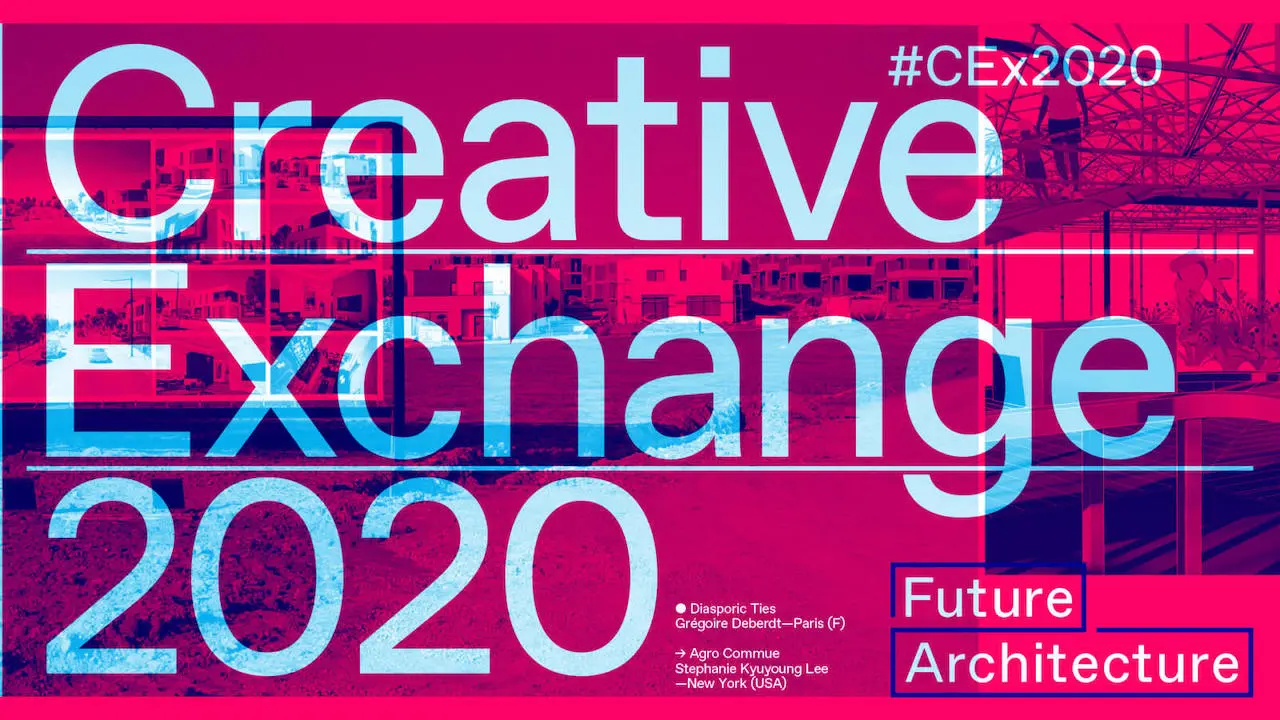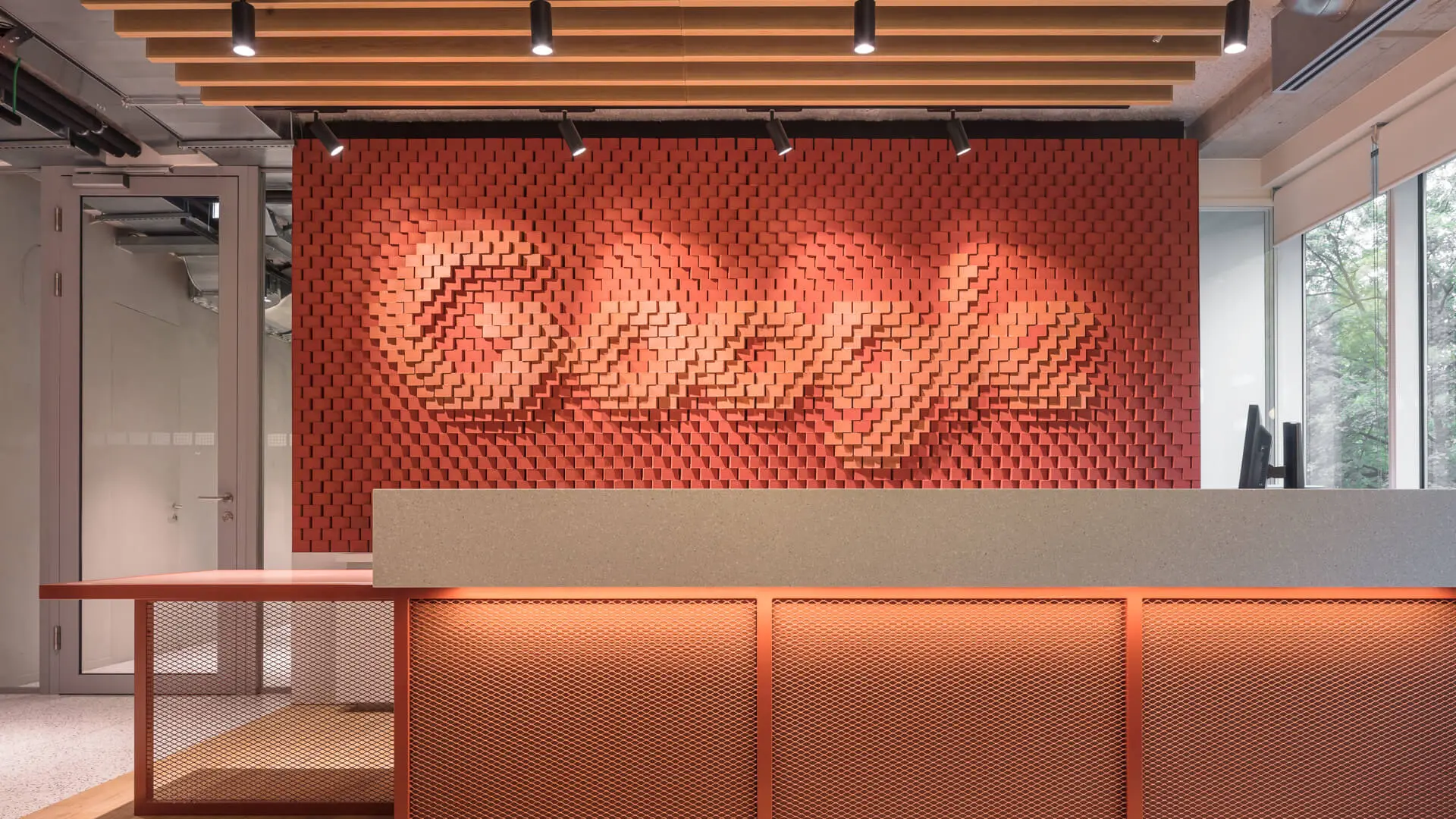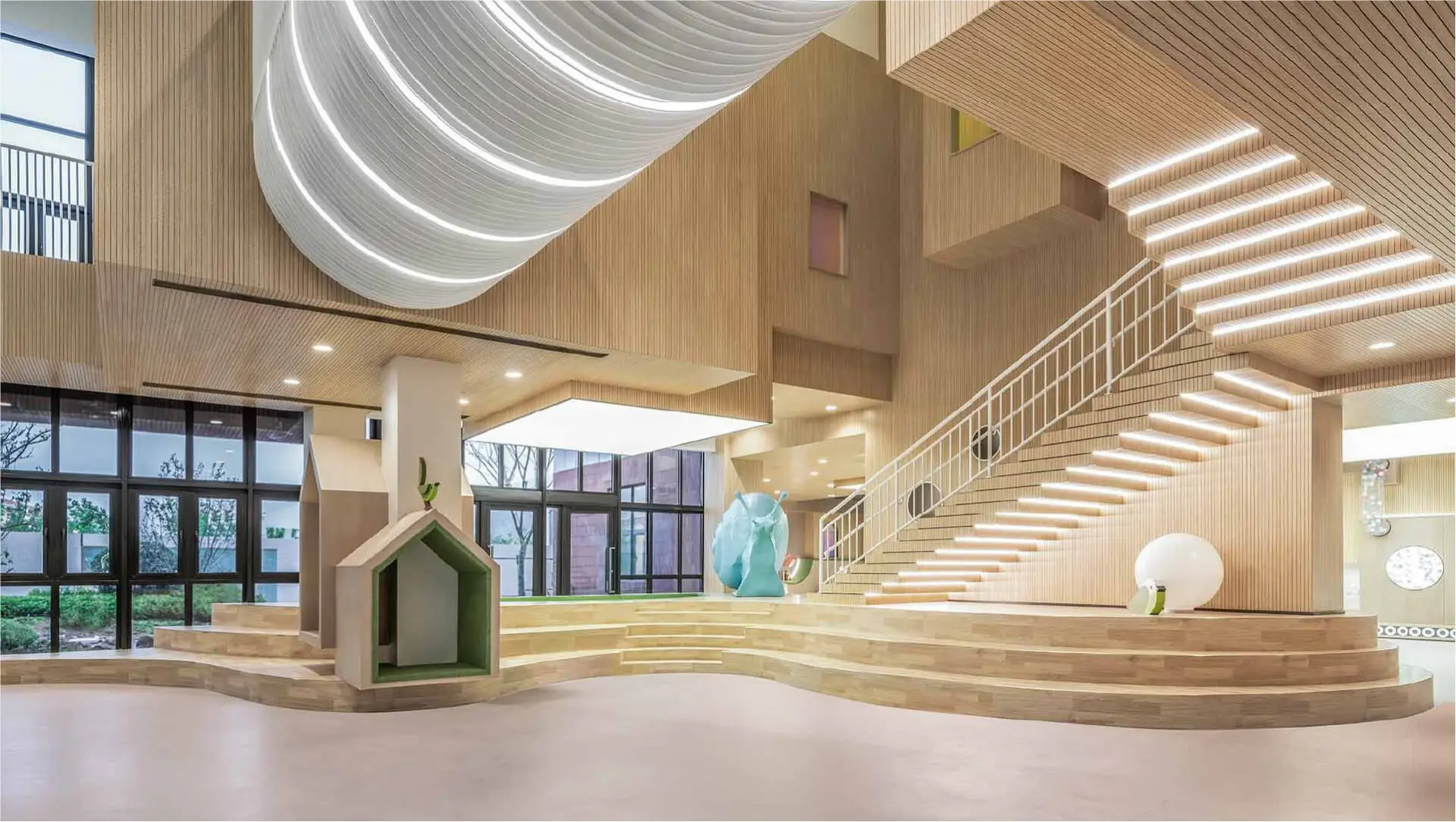Architecture management: 15 architects share the best lessons they have learned
There is no cookie-cutter solution when it comes to managing architecture firms

What does Architecture management involve? As a matter of fact, one principal architect told us that across his firm’s 5 offices, each team is run differently.
On top of the fact that architecture by nature presents a unique set of managerial challenges, such as the need to balance resources across numerous projects, many architects voice that there is a lack of formal management training in the industry.
Those architects who rise to the role of Project Manager and principal often arrive there after years of successful work, however, they assume the role with little formal knowledge of how to manage a team.
We reached out to over 30 principal architects at firms ranging from sole proprietorships to practices with over 2000 employees to learn some of the most important architecture management lessons they’ve learned over the years.
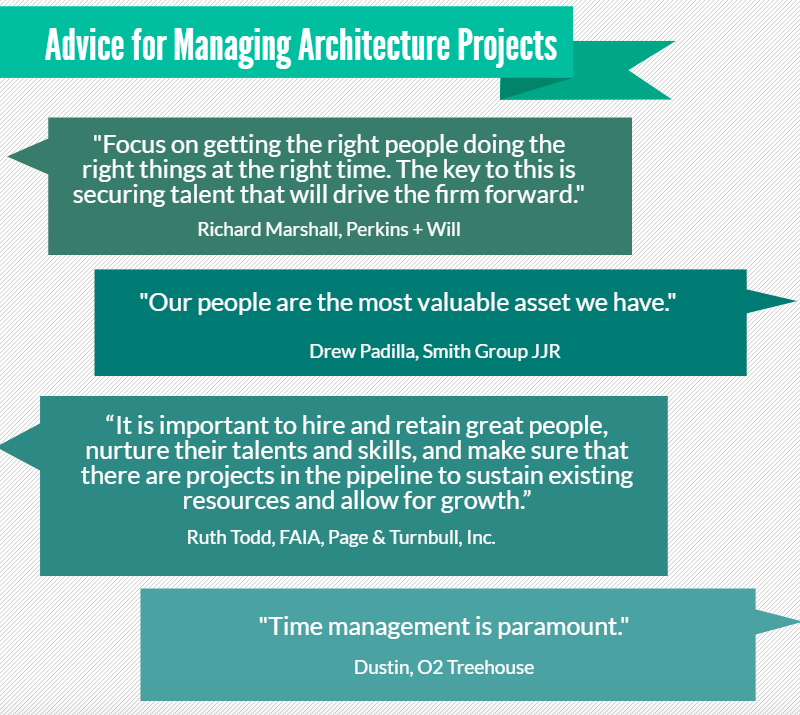
Architecture management: the 15 responses received
Their most important lesson learned is that employing great talent leads to success on projects and success of the firm overall.
The second most popular answer behind “great talent” is that “time management is paramount”.
- “Focus on getting the right people doing the right things at the right time. The key to this is securing talent that will drive the firm forward,” Richard Marshall, Perkins + Will
- “Our people are the most valuable asset we have,” Drew Padilla, Smith Group JJR
- “It is important to hire and retain great people, nurture their talents and skills, and make sure that there are projects in the pipeline to sustain existing resources and allow for growth,” Ruth Todd, FAIA, Page & Turnbull, Inc.
Motivating employees is a challenge faced by managers across all industries, but can feel especially difficult in a field driven by creative individuals such as architecture. This is because the power to autonomously making decisions is intrinsic to motivation.
In architecture firms, the balance between the signature style of a firm versus individuals who are striving to let their own architectural creativity shine through on a project can create a barrier to motivation (Galloway and Amos, 15).
In an interview with Mark Baginski of Verde Design, he says that in his firm, they strive to keep architects on a project from beginning to end, which endows the architect with a sense of ownership and pride in the project.
Implementing a policy similar to this could be one potential way to keep young architects, who tent to have less autonomy, motivated and involved.
- “Time management is paramount,” Dustin, O2 Treehouse
- “Organization and process are critical to success – of projects and of the firm,” Janine, Scavullo Design
- “Individual peoples’ skills must align with the project needs,” Brian Neumann, Neumann Sloat Arnold Architects, Inc.
- “Great projects are worth working hard for but time management is critical. A diverse and versatile portfolio is a great asset for architecture firms,” Sarah Ebner, See-Design
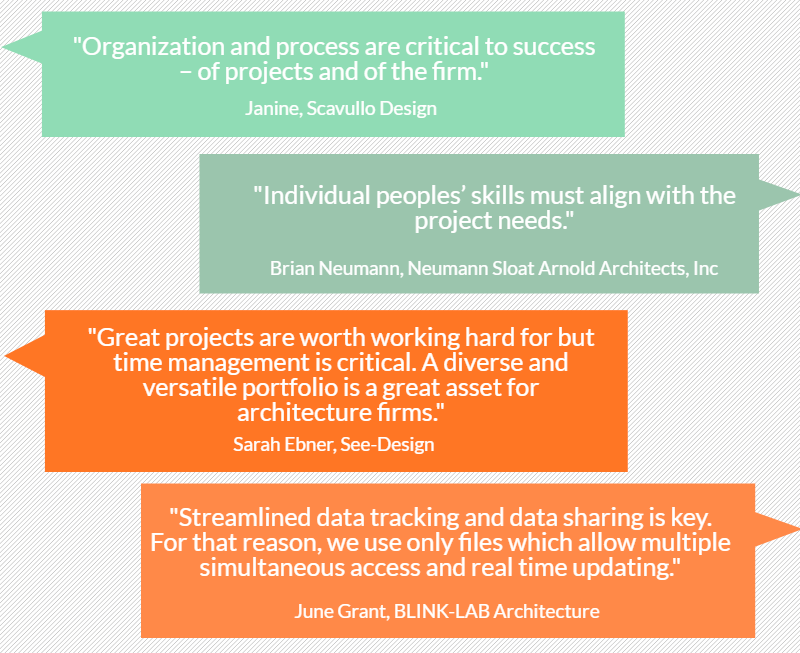
Striking the right balance between innovative projects and “routine, pre-budgeted” work is important to keep the bottom line of the firm healthy, while allowing teams in the firm to exercise their creative side and feel fulfilled in their work.
However, some firms may prefer that their creative work serves as an avenue to draw in more clients of the same nature.
As described in Galloway and Harniff’s 2015 paper Managing Projects in Architecture, for these firms “the ideal situation…is when creativity forms the basis of successful business outcomes”.
- “Forecasting and strategic planning,” Anonymous
- “People and ideas are our greatest asset,” Scott Slaney, Terrain Studio
- “The delicate balance between client budgets, what they would really like to have, and construction costs,” Carla, William Hefner Architect
- “The value of knowing how to do everything yourself before farming it out,” Christina Yoo, Atelier Cho Thompson
Christina Yoo (above) makes an interesting point about architecture management.
Oftentimes, it feels natural to delegate activities that are outside of one’s scope of expertise. After all, we can’t expect to learn each new skill required.
However, an alternative management strategy that may alleviate headaches is to delegate tasks or projects that you already understand how to do.
The logic behind this is that 1) it’s easier to set clear expectations for the work, and 2) monitoring progress and quality is more straightforward.
- “Patience,” Michael McMackin, Auerbach and Associates
- “The most important thing is time management as it directly relates to cost and overhead. In addition, time management is important to client satisfaction and the ability to close a sale,” Tony, Huntington Pools, Inc.
- “Streamlined data tracking and data sharing is key. For that reason, we use only files which allow multiple simultaneous access and real time updating,” June Grant, BLINK-LAB Architecture
- “There is so much more to [architecture] than just design. It requires people skills, organization, dedication, and perseverance,” Steve Sutherland, SSA Landscape Architects
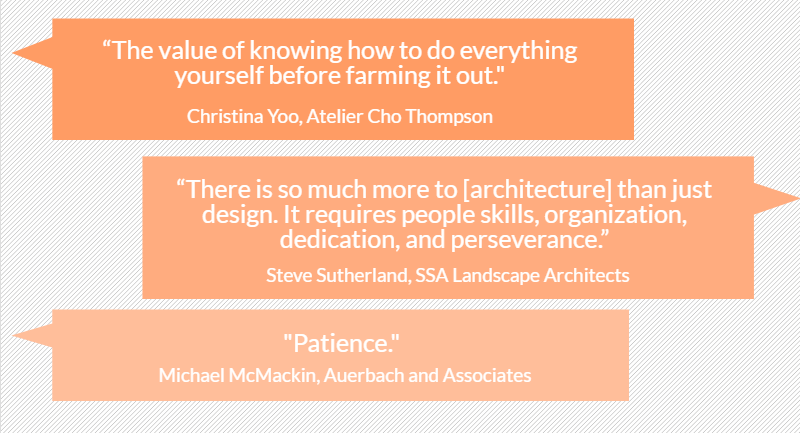
Conclusion
In this industry, good architecture management skills are oftentimes acquired through experience rather than formal training. This learning process can be accelerated by exploring the best practices, advice, and lessons from principal architects and PMs who have built up their knowledge base over the course of years, even decades in the industry.
This article was originally published by Appfluence. Appfluence makes Priority Matrix which provides visibility to principals and project managers of what their team is working on.



